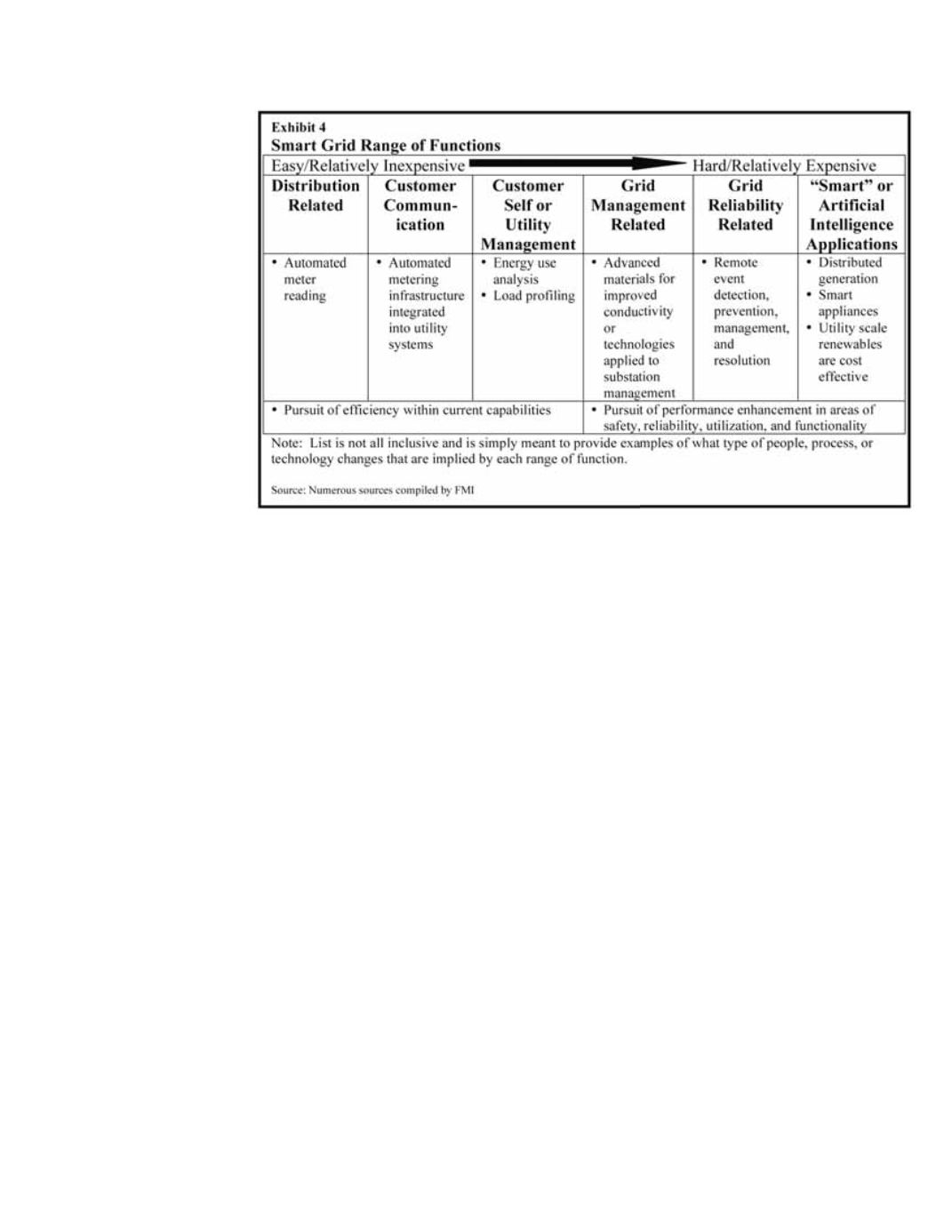

PCCA Journal|1
st
Quarter 2010
10
Smart Grid Impact
In the utility world today,
few topics are as hot, yet
as confusing, as the smart
grid. With companies
like Cisco predicting the
underlying communica-
tions network will be “100
or 1,000 times larger than
the internet,” there is
good reason to be excited.
1
Experiments in converting
cities over to a “smart grid”
are well under way, with
Boulder, Colo., and Austin,
Tex., leading the way.
In Boulder, Xcel Energy
invested $100 million to
build one version of a
smart grid. All in, Xcel
installed 200 miles of fiber
optic cable, 4,600 residen-
tial and small business
transformers, and more than 16,000 smart meters. The
project has been a success. Customer complaints about
voltage fluctuation were reduced to zero from 60 a
couple years earlier.
2
Xcel’s work in Boulder is one example of a smart
grid, but how else might the concept be applied and
how will it impact construction spending? While there
is no consistently accepted definition, a smart grid
generally consists of a spectrum of opportunities, some
of which are already in high use (Exhibit 4). It is FMI’s
opinion that the impacts to both distribution and trans-
mission construction activity are years away with the
exception of meter replacement, which is accelerating.
With the grid approaching capacity and more power
set to come online, the Department of Energy’s (DOE)
Office of Electricity Delivery and Energy Reliability has
partnered with industry to begin shoring up transmis-
sion lines using high-temperature superconducting
(HTS) cables. The first such project was completed in
April 2008 when the American Superconductor Cor-
poration and Long Island Power Authority energized a
2,000-ft., 138-kV cable capable of transmitting 574MW
of energy. The project cost $58.5 million and would
not be possible without a $28.5 million subsidy by the
DOE.
Also underway is a $39 million project on New York
City’s network, operated by ConEdison. Dubbed “HY-
DRA,” the project is dependent on the Department of
Homeland Security for $25 million in funding.
3
As NRG
Energy CEO David Crane explained, “If we are not do-
ing things completely differently by 2030, we will be in
a world of hurt....”
4
The ARRA, better known as the stimulus program,
appropriated $6 billion to support the DOE’s loan guar-
antees of $60 billion for renewable energy and electric
transmission projects. While undoubtedly a noteworthy
and positive measure, utilities and transmission devel-
opers are having trouble obtaining permit approval to
site and build transmission lines. Standing in their way
is a maze of both state and federal regulations, with
the two sets often misaligned.
In California, a state known for its progressive stance
on regulating transmission construction, Governor
Schwarzenegger announced he would veto legislation
requiring 33 percent of the state’s energy to come from
renewable sources by 2020, instead choosing to man-
date the change through executive order. His action is
out of concern for what his communication director
called a “poorly drafted, overly complex bill...that will
kill the solar industry in California and drive prices up
like the failed energy deregulation of the late 1990s.”
5
The source of the conflict was a provision that allowed
California utilities to buy power from outside the state.
Renewable Power Impact
“The United States...lacks a modern interstate trans-
mission grid to deliver carbon-free electricity to cus-
tomers in highly populated areas of the country...’Green
power superhighways’...carrying electricity from remote
to populated areas...the key to any cost-effective plan
is the use of high-voltage transmission lines in place of
the low-voltage lines commonly deployed in the U.S.
Market Forecast
Continued from page 8
Continued on page 12

















